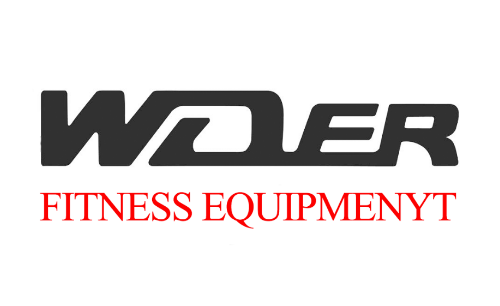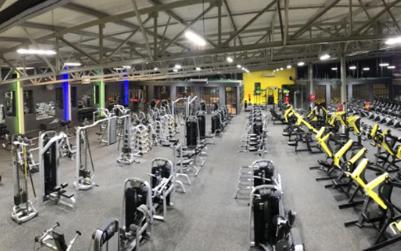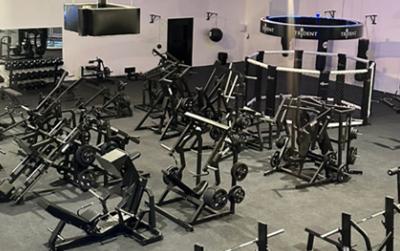How Rack and Pinion Power Assisted Steering Works: A Comprehensive Overview
Rack and pinion power assisted steering is a fundamental component of modern vehicles, providing enhanced steering control and driver comfort. Understanding its functionality requires a look at both the mechanical aspects and the hydraulic or electric systems that assist the driver in maneuvering the vehicle with ease. This section delves into the workings of rack and pinion power assisted steering, highlighting its key components and the overarching principle that makes driving smoother and more efficient.
Click Check The High Quality Power Racks From Wder Fitness!
The Basic Mechanics of Rack and Pinion Steering
The rack and pinion steering system consists of a few essential elements that work together to convert the rotational motion of the steering wheel into linear motion, which ultimately turns the wheels. The main components include:
- Steering Wheel: The driver uses the steering wheel to initiate movement.
- Steering Column: This links the steering wheel to the rack and pinion mechanism.
- Pinion Gear: Attached to the bottom of the steering column, the pinion gear rotates as the steering wheel turns.
- Rack: A linear gear that moves side-to-side when the pinion gear rotates, pushing and pulling the tie rods connected to the wheels.
- Tie Rods: These connect the rack to the vehicle’s wheels, allowing for the transfer of motion.
Power Assistance: Hydraulic and Electric Systems
Although the rack and pinion setup can function without power assistance, modern vehicles typically include either hydraulic or electric power assistance to make steering easier, especially at low speeds. Here’s how each system works:
- Hydraulic Power Steering (HPS): This system uses a pump, driven by the engine, to pressurize fluid that is directed to a cylinder associated with the rack. As fluid pressure is applied, it allows for easier movement of the steering mechanism.
- Electric Power Steering (EPS): Instead of hydraulic fluid, this system uses an electric motor to provide assistance. Sensors detect the driver's steering input and activate the motor to assist in turning, thus reducing the effort needed to steer.
Both systems effectively reduce the force required to turn the steering wheel, allowing drivers to navigate their vehicles effortlessly, even in tight situations or during parking maneuvers.
The Advantages of Rack and Pinion Power Assisted Steering
Implementing rack and pinion power assisted steering has several benefits:
- Improved Manoeuvrability: Provides better handling and responsiveness, enhancing the driving experience.
- Reduced Driver Fatigue: Decreases physical effort needed to steer, especially over long distances.
- Better Fuel Efficiency: Electric systems consume less power than hydraulic systems, contributing to overall fuel savings.
- Enhanced Control: Offers more precision in steering, especially important during high-speed driving or cornering.
In summary, rack and pinion power assisted steering systems are integral to modern driving, providing significant advantages over traditional mechanical systems. By understanding how these systems work, drivers can appreciate the technology that enhances both safety and comfort on the road. With the right knowledge and maintenance, drivers can ensure that their rack and pinion power assisted steering systems remain in optimal condition, contributing to a seamless driving experience.
Benefits of Rack and Pinion Power Assisted Steering for Modern Vehicles
In the evolving landscape of automotive technology, rack and pinion power assisted steering (PAS) has emerged as a fundamental component that enhances driving experience. Offering a perfect blend of efficiency, responsiveness, and driver comfort, this steering mechanism has become the standard for modern vehicles. Let's explore the numerous benefits that rack and pinion power assisted steering provides.
Enhanced Responsiveness and Control
One of the most significant advantages of rack and pinion power assisted steering is the enhanced responsiveness it offers. This system allows for precise steering control, which is particularly beneficial during tight maneuvers or high-speed driving. Advantages include:
- Immediate Feedback: Drivers receive direct feedback as they turn the wheel, allowing for quick adjustments and improved handling.
- Sharp Turning Radius: The mechanics of the rack and pinion design enable a much sharper turning radius, enhancing maneuverability in confined spaces.
- Reduced Driver Fatigue: The power assistance minimizes the physical effort needed to steer, making long drives less tiresome.
Improved Fuel Efficiency
Modern vehicles equipped with rack and pinion power assisted steering systems can also boast improved fuel efficiency. The lightweight nature of the system contributes to this benefit:
- Less Weight: Compared to traditional steering systems, rack and pinion is typically lighter, which can contribute to a reduction in overall vehicle weight.
- Lower Resistance: The mechanical efficiency allows the engine to use less power to drive the auxiliary systems, leading to better fuel economy.
- Optimized Driving Conditions: An efficient steering mechanism adapts better to different driving conditions, further enhancing fuel efficiency.
Enhanced Safety Features
Safety is a primary concern for all vehicle manufacturers, and rack and pinion power assisted steering offers several safety-related advantages:
- Stability at High Speeds: Improved steering stability leads to better control during high-speed driving, reducing the likelihood of accidents.
- Advanced Safety Systems Integration: Many modern PAS systems can seamlessly integrate with electronic stability control and other advanced safety features to provide additional support in emergency situations.
- Quick Response to Obstacles: The enhanced responsiveness allows drivers to react quickly to unforeseen obstacles, thereby potentially preventing accidents.
Cost-Effective Maintenance
Another advantage of rack and pinion power assisted steering is its relatively straightforward maintenance needs:
- Fewer Components: With fewer moving parts than older systems, the potential for wear and tear is reduced, leading to fewer repairs over time.
- Accessible Replacement Parts: Parts for rack and pinion systems are widely available, making repairs easier and more affordable.
- Longer Lifespan: The durability of these systems means that, with proper care, they can often last the lifetime of the vehicle.
In conclusion, the benefits of rack and pinion power assisted steering for modern vehicles are numerous and undeniable. From enhancing responsiveness and control to improving fuel efficiency and safety, this steering mechanism plays a vital role in the overall performance and comfort of contemporary automobiles. Choosing vehicles equipped with this advanced steering technology can lead to a more enjoyable and secure driving experience, making it a worthwhile investment for any driver.
What to Look For When Choosing Rack and Pinion Power Assisted Steering
Choosing the right rack and pinion power assisted steering system for your vehicle is crucial for ensuring optimum performance, safety, and driving comfort. With numerous options available in the market, understanding the key features and specifications can help you make an informed decision. Here are some essential factors to consider when selecting a rack and pinion power assisted steering system.
1. Compatibility with Your Vehicle
Before making a purchase, ensure that the rack and pinion power assisted steering system is compatible with your specific vehicle model. Different vehicles have varying specifications, and using a system that is not designed for your car can lead to improper performance and increased wear.
- Check the vehicle make, model, and year.
- Consult the manufacturer's guidelines or an expert for compatible systems.
2. Type of Power Assistance
Rack and pinion power assisted steering systems can offer either hydraulic or electronic power assistance. Your choice should be guided by your preferred driving experience and vehicle dynamics:
- Hydraulic Power Steering: Provides a traditional feel with great feedback but can be less efficient, especially at lower speeds.
- Electric Power Steering (EPS): Offers adjustable assistance levels, making it more efficient and easier to handle. EPS systems can also lead to better fuel economy.
3. Build Quality and Material
The build quality of a rack and pinion power assisted steering system significantly affects its durability and performance. Consider the following:
- Look for high-quality materials such as aluminum or reinforced steel.
- Check for seals and protective coatings that prevent rust and corrosion.
Investing in a robust system ensures longevity and performance reliability, reducing the likelihood of future repairs.
4. Ease of Installation
Consider how challenging the installation process will be. Some systems may require specialized tools and expertise, while others are designed for easier bolt-on installation. If you’re planning to install it yourself, opt for a system that includes:
- Comprehensive installation instructions.
- All necessary hardware and components.
5. Price and Warranty
Your budget will definitely play a role in your decision-making process, but it’s crucial to balance cost with quality. Look for systems that offer:
- A reasonable price point that aligns with your budget.
- A warranty that protects against defects and failures, typically ranging from one to three years.
Keep in mind that while the cheapest option might be appealing, investing a bit more in a higher-quality system could save you money in repairs and replacements in the long run.
6. Customer Reviews and Recommendations
Finally, don’t overlook the power of customer feedback. Check online forums, automotive review sites, and social media for reviews on potential options. Look for:
- Comments on ease of installation and performance.
- Feedback regarding customer service from manufacturers.
By considering these aspects, you can effectively narrow down your options and select a rack and pinion power assisted steering system that enhances your driving experience. A well-chosen system not only improves vehicle handling but also contributes to overall driving safety and comfort. Ultimately, thorough research and thoughtful consideration will lead to making a more informed, satisfying choice for your vehicle's needs.
Maintenance Tips for Rack and Pinion Power Assisted Steering Systems
Maintaining your rack and pinion power assisted steering system is essential for ensuring safe and smooth vehicle operation. A properly functioning steering system allows for better control and maneuverability, ultimately enhancing the driving experience. Here are some important maintenance tips to keep your steering system in peak condition.
Regular Inspections
Routine inspections are critical for identifying and addressing potential issues before they escalate. Check the following components during your inspection:
- Steering Fluid Levels: Regularly check the power steering fluid reservoir to ensure it is at the appropriate level. Low fluid levels can lead to steering difficulties and damage to the system.
- Leaks: Inspect the system for any visible leaks. Look for fluid puddles or wet spots around the steering rack and associated components.
- Flexible Hoses: Examine the hoses for cracks, abrasions, or signs of wear. Damaged hoses can lead to fluid loss and impact steering performance.
Fluid Maintenance
Maintaining proper fluid quality is crucial for the health of your rack and pinion power assisted steering. Here are some tips:
- Change Power Steering Fluid: Follow the manufacturer's guidelines for fluid change intervals. Typically, it is recommended to change the fluid every 50,000 to 100,000 miles, or as specified in your owner's manual.
- Flush the System: If the fluid appears dark, gritty, or contaminated, a complete flush of the power steering system may be necessary to prevent component damage.
- Use the Correct Fluid: Always use the type of power steering fluid recommended by the vehicle manufacturer to ensure optimal performance and compatibility.
Avoiding Oversteering and Understeering
Your driving habits can significantly impact the longevity of your rack and pinion power assisted steering system. Here are some driving tips to keep in mind:
- Avoid Sharp Turns at High Speeds: Sharp and abrupt steering movements while driving at high speeds can stress the steering components. Make gradual steering adjustments when necessary.
- Don’t Hold the Wheel at Endpoints: Refrain from holding the steering wheel against the stops when making turns, as this can cause unnecessary strain on the system.
- Regularly Rotate Tires: Uneven tire wear can affect steering control. Ensure you have your tires rotated regularly to promote even wear and improve handling.
Professional Servicing
If you notice any unusual noises, difficulty in steering, or fluid leaks during your inspections, it is advisable to get your vehicle checked by a professional mechanic. Regular professional servicing can help identify and repair any underlying issues before they become serious problems.
In conclusion, maintaining your rack and pinion power assisted steering system is essential for enjoying a safe and responsive driving experience. Regular inspections, fluid maintenance, mindful driving habits, and professional check-ups are all vital components of effective steering system care. By prioritizing this maintenance routine, you can prolong the life of your steering system and ensure a smooth ride for years to come.













